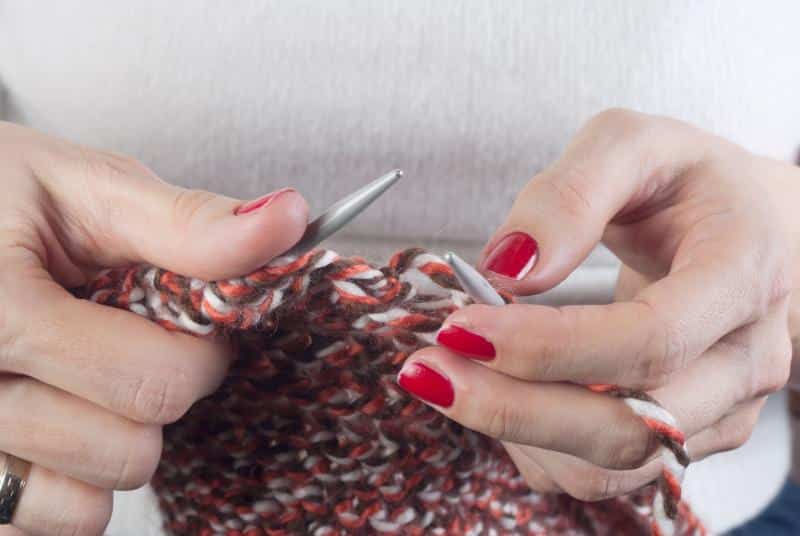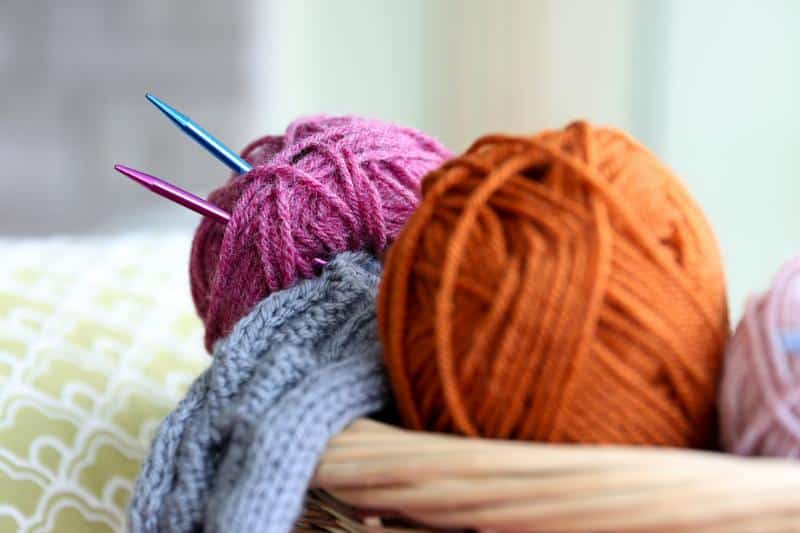The world of knitting is a tapestry of creativity, and at the heart of every knitting project are the humble yet indispensable tools—knitting needles. Whether you’re a seasoned knitter or a novice exploring the world of yarn and stitches, understanding the nuances of knitting needles is key to unlocking your full creative potential. In this comprehensive guide, we delve into the different types of knitting needles, their materials, and how choosing the right needles can elevate your knitting experience.

Types of Knitting Needles
Knitting needles come in various types, each offering unique characteristics suited to different knitting styles and projects. Understanding the distinctions between these types empowers knitters to choose the perfect needles for their creative endeavors.
- Single-Point Needles: Single-point needles, often referred to as straight needles, are the classic and most commonly used type. They have a pointed end at one side and a knob or stopper at the other. Stitches are worked on one needle, and the other holds the completed stitches.
- Double-Point Needles (DPNs): Double-point needles have points at both ends and come in four or five sets. They are ideal for knitting in the round, especially for projects like socks, sleeves, and hats. DPNs eliminate the need for circular needles when working on smaller circumference projects.
- Circular Needles: Circular needles consist of two needle tips connected by a flexible cable. These needles are versatile, allowing for both flat and in-the-round knitting. Circular needles are particularly useful for larger projects like blankets and sweaters.
- Interchangeable Needles: Interchangeable needles offer versatility by allowing knitters to switch needle tips and cable lengths. This flexibility is advantageous for adapting to different projects without needing a full set of individual needles.
- Fixed Circular Needles: Fixed circular needles have non-detachable needle tips connected by a cable. These needles are suitable for projects that require a specific needle size and cable length.
Materials of Knitting Needles
Knitting needles are crafted from various materials, each contributing to the overall knitting experience in terms of weight, warmth, and flexibility.
- Wooden Needles: Wooden needles, made from materials like bamboo, birch, or rosewood, are favored for their warmth, lightweight feel, and slight flexibility. They provide a natural grip and are ideal for those who enjoy a warmer touch while knitting.
- Metal Needles: Metal needles, typically made of aluminum, steel, or nickel, are known for their durability and smooth surface. They offer quick and slick knitting, making them suitable for projects with intricate stitches or fine yarn.
- Plastic Needles: Plastic needles are lightweight and come in various colors. They are an affordable option for beginners and are often chosen for projects where the weight of the needles is a consideration.
- Carbon Fiber Needles: Carbon fiber needles are a modern option that combines durability with a lightweight feel. They offer a smooth knitting experience and are often favored by knitters who appreciate a high-performance needle.
Choosing the Right Knitting Needles
The right knitting needles can significantly impact your project’s outcome and overall knitting experience. Consider the following factors when selecting needles for your next creation:
- Yarn Weight: Different yarn weights pair best with specific needle sizes. Pay attention to the recommended needle size on your yarn label to achieve the desired tension and drape.
- Project Type: The type of project you’re working on influences the choice of needles. You may prefer fine, pointed needles for delicate lace projects, while bulkier projects benefit from larger, more robust needles.
- Material Preferences: Consider the material of the needles based on your personal preferences. Opt for wooden needles if you enjoy wood’s warmth and natural feel. If speed and slickness are priorities, metal needles might be more suitable.
- Comfort and Ergonomics: Pay attention to the shape and grip of the needles. Some knitters prefer needles with ergonomic designs, such as those with cushioned grips or contoured shapes, to reduce hand fatigue during extended knitting sessions.

Exploring Specialty Needles and Accessories
In addition to the standard types of knitting needles, there are specialty needles and accessories designed to enhance specific aspects of your knitting experience.
- Lace Needles: Lace needles have extra-pointy tips and are designed for intricate lacework. The sharp points help with precision in creating delicate lace patterns.
- Cable Needles: Cable needles have a short, U-shaped design that holds stitches aside while working on cable patterns. They prevent stitches from unraveling and help create textured cable designs.
- Sock Needles: Sock needles are typically shorter double-point needles designed for knitting socks in the round. Their shorter length makes it easier to manage the smaller circumference of sock projects.
- Needle Gauges: Needle gauges are handy tools for determining the size of your needles. They often include a ruler for measuring gauge swatches, ensuring your project matches the intended dimensions.
The Importance of Quality Needles
Investing in high-quality knitting needles is a worthwhile consideration for avid knitters. Quality needles offer several advantages, including:
- Durability for Longevity: Quality knitting needles are constructed from durable materials, ensuring they withstand the rigors of repeated use. Whether you’re a casual knitter or a dedicated enthusiast, durable needles offer longevity, reducing the need for frequent replacements. This not only saves you money in the long run but also minimizes the environmental impact of disposable needles.
- Smooth and Effortless Knitting: The smoothness of quality needles significantly influences the knitting process. Well-made needles with polished surfaces and precisely tapered points allow the yarn to glide effortlessly. This reduces friction, prevents snagging, and contributes to a more enjoyable and efficient knitting experience. Smooth needles are especially crucial when working with delicate yarn or intricate stitch patterns.
- Consistent Sizing for Gauge Accuracy: Maintaining an accurate gauge is paramount in knitting, especially when following patterns or creating garments. Quality needles are manufactured with precision, ensuring consistent sizing across different needles of the same size. This consistency helps you achieve the intended gauge, preventing discrepancies in stitch and row counts that could affect the fit and dimensions of your projects.
- Enhanced Comfort and Ergonomics: Knitting often involves extended periods of hand movement, and the comfort of your needles can impact hand fatigue. Quality needles often feature ergonomic designs, including cushioned grips, contoured shapes, and balanced weights. These features contribute to greater comfort during prolonged knitting sessions, allowing you to focus on your creativity without unnecessary strain on your hands.
- Reduced Splitting and Breakage: Subpar needles may have imperfections contributing to yarn splitting or needle breakage in extreme cases. Quality needles are crafted with attention to detail, reducing the likelihood of these issues. This reliability is especially important when working with delicate fibers or when executing intricate stitch techniques that demand precision.
- Versatility in Project Execution: Different projects may call for varying needle types, and quality needles offer versatility to adapt to diverse knitting requirements. Whether you’re using single-point needles for a classic scarf, double-point needles for socks, or circular needles for a seamless sweater, high-quality needles ensure that you have the right tools for the job.
- Enhanced Aesthetic Appeal: Beyond functionality, quality needles often exhibit an aesthetic appeal that adds to the overall knitting experience. Thoughtfully crafted needles with attractive finishes, unique designs, or natural materials can enhance the visual aspect of your knitting tools. This aesthetic appeal contributes to the pleasure of working with beautiful and well-made instruments.
- Inspiration and Confidence: Knitting is not just a craft; it’s a form of self-expression and creativity. Using quality needles that align with your preferences and style can be inspiring. When you have confidence in your tools, you’re more likely to embark on ambitious projects, experiment with new techniques, and push the boundaries of your knitting skills.
Knitting Needles: A Gateway to Creativity
As you embark on your knitting journey, choosing knitting needles becomes a personal and pivotal decision. Whether you’re drawn to the warmth of wooden needles, the sleekness of metal, or the versatility of circulars, the right needles can enhance your creativity and bring your knitting visions to life. With the right needles in hand, every stitch becomes a step closer to transforming yarn into a masterpiece of creativity and craftsmanship.
